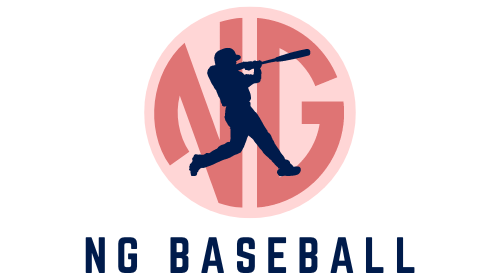I’m a lifelong fan of America’s pastime and someone who has spent countless hours both watching and playing the game. But there’s one question that seems to pop up whether I’m at the ballpark or watching from the comfort of my home: “How long is this game going to last?”
It’s a question that’s as old as the game itself, and the answer isn’t as straightforward as you might think. That’s why I’ve decided to explore everything from the basic rules that govern game length to the external factors that can turn a quick nine innings into a marathon event.
So, grab your peanuts and Cracker Jacks as we take you through a journey to understand the real duration of a baseball game.
The Basics of Baseball Timing
Baseball is unique in the world of professional sports because it’s one of the few games without a clock. This means that the length of a game can vary significantly.
Innings and Half-Innings
A standard baseball game consists of nine innings, and each inning is divided into two halves: the top half and the bottom half. In the top half, the visiting team bats, while the home team plays defense. The roles are reversed in the bottom half.
An inning is considered complete when both teams have had their turn to bat. The time it takes to complete an inning can vary widely based on several factors, including the skill of the pitcher, the strategy employed by the teams, and even the weather conditions.
On average, a single inning can take anywhere from 20 to 30 minutes, although this is by no means a hard rule.
Factors That Influence Game Length
Now that we understand the basic structure of a baseball game, let’s explore the various elements that can influence its duration. From the pace of play to extra innings and even the impact of television broadcasts, many factors can extend or shorten a game.
Pace of Play
The pace of play is a significant factor that affects the length of the game. This includes the time it takes for a pitcher to deliver the ball, the duration of at-bats, and the time spent on other activities like mound visits or replay reviews.
Major League Baseball (MLB) has implemented several rules to speed up the game, such as limiting mound visits and implementing a pitch clock in the minor leagues. Despite these efforts, the average length of MLB games has generally increased over the years, with games now often exceeding three hours.
Extra Innings
Extra innings are another crucial factor that can extend the length of a baseball game. If the game is tied at the end of the standard nine innings, it goes into extra innings to determine a winner.
Each extra inning follows the same format as the standard innings but with a twist: starting from the 10th inning, each half-inning begins with a runner on second base. This rule was implemented to speed up the game and arrive at a conclusion more quickly.
However, games can still extend significantly if neither team scores.
The Role of Broadcast Media
Television and radio broadcasts have a profound impact on the length of baseball games. With commercial breaks, interviews, and other segments designed to engage viewers and listeners, what happens off the field can be just as influential as the action on it.
Commercial Breaks
Commercial breaks are a necessary part of broadcasting, but they also add to the length of a baseball game. Typically, there are commercial breaks between innings and during pitching changes, which can add up to a significant amount of time over the course of a game.
In an effort to mitigate this, some broadcasters have experimented with split-screen commercials that allow the game to continue in a smaller window while the advertisement plays.
Despite these innovations, commercial breaks remain a significant factor in extending game length.
In-Game Interviews and Segments
In addition to commercial breaks, in-game interviews, and special segments can also extend the length of a broadcast. These are often used to provide viewers with additional insights into the game, such as interviews with players, coaches, or experts.
While these segments add value to the broadcast, they also contribute to the overall length of the game. However, it’s worth noting that these segments are usually carefully timed to coincide with natural breaks in the game, such as between innings, to minimize their impact on game length.
The Impact of Weather Conditions
Weather plays a more significant role in baseball than in many other sports. Unlike basketball or hockey, which are played indoors, baseball is subject to the whims of Mother Nature.
From rain delays to windy conditions, weather can have a considerable impact on how long a baseball game lasts.
Rain Delays
Rain delays are perhaps the most obvious way that weather can extend a game. When it rains heavily, the game may be paused until conditions improve. These delays can last anywhere from a few minutes to several hours, depending on the severity of the weather.
In some cases, if the weather doesn’t improve, the game may be postponed to another day, effectively making the “length” of the game span multiple days. However, this is generally a last resort and only happens when completing the game on the same day becomes impractical.
Wind and Temperature
While less disruptive than rain, wind and temperature can also influence the length of a baseball game. Strong winds can make it more challenging for players to catch fly balls or can even turn what would have been a routine out into a home run, extending innings and, by extension, the game.
Temperature can also play a role. In colder weather, players may take longer between pitches to warm their hands or adjust their grip, subtly adding to the game’s length. Conversely, extremely hot conditions might lead to more frequent breaks for hydration.
The Evolution of Game Length Over Time
Baseball has been around for over a century, and like any long-standing institution, it has evolved. One of the most notable changes is the length of games, which has seen a gradual increase over the years.
Early Days vs. Modern Era
In the early days of baseball, games were generally much shorter than they are today. The lack of commercial breaks, simpler rules, and a faster pace of play contributed to this. Games often lasted around two hours or even less.
Fast forward to the modern era, and the average Major League Baseball game now lasts over three hours. This increase can be attributed to a variety of factors, including more strategic play, the introduction of replay reviews, and, as mentioned earlier, the influence of broadcast media.
The Impact of Rule Changes
Rule changes have also played a significant role in the length of baseball games. For example, the introduction of the designated hitter in the American League in 1973 led to longer games due to increased offensive production.
More recently, MLB has experimented with rules designed to speed up the game, such as limiting mound visits and introducing a pitch clock in the minor leagues. While the impact of these changes on game length is still being evaluated, they represent ongoing efforts to manage the duration of games.
Comparing Baseball to Other Sports
Baseball isn’t the only sport where game length is a topic of discussion. Comparing baseball to other major sports can provide a broader context for understanding why baseball games last as long as they do.
| Sport | Average Game Length | Timing System | Variability in Game Length | Impact on Viewer Experience |
|---|---|---|---|---|
| Baseball | ~3 hours | No clock; 9 innings divided into top and bottom halves | High | Greater strategic depth due to lack of clock; potential for dramatic late-game situations |
| Football | ~3.5 hours | Four 15-minute quarters; set halftime length | Moderate | More structured, less variability; potential for overtime |
| Basketball | ~2-2.5 hours | Four 12-minute quarters (NBA); continuous clock with timeouts and breaks | Low | Streamlined viewing; shorter, more predictable segments |
| Soccer | ~2 hours | Two 45-minute halves; the clock rarely stops | Low | Continuous action; streamlined viewing but limited strategic depth due to continuous clock |
The Impact of Strategy
Strategy is an integral part of baseball, affecting not just the outcome but also the length of the game. From pitching changes to intentional walks and bunts, the decisions made by managers and players can significantly influence how long a game lasts.
Pitching Changes
One of the most common strategic moves that can extend a game is a pitching change. Managers often switch pitchers based on matchups, fatigue, or game situations. Each pitching change involves a warm-up period, which adds several minutes to the game’s length.
Additionally, some managers employ a strategy known as “bullpenning,” where they use a series of relief pitchers from the start of the game rather than relying on a traditional starting pitcher.
This approach can lead to frequent pitching changes, thereby extending the game’s duration.
Intentional Walks, Bunts, and Other Tactics
Other strategic elements like intentional walks and bunts can also add time to a game. An intentional walk requires four pitches outside the strike zone, and while this may not seem like much, it can add up over the course of a game.
Similarly, bunts and other “small ball” tactics can extend the length of an inning by increasing the number of at-bats and pitches. While these strategies can be effective in winning games, they also contribute to longer game durations.
FAQs:
How does the length of a Minor League game compare to a Major League game?
Minor League games generally tend to be shorter than Major League games. This is often due to a variety of factors such as fewer strategic pitching changes, less time taken for commercial breaks, and sometimes even different rules that aim to speed up the game.
However, the difference is not usually drastic and can vary from game to game.
Do playoff games typically last longer than regular-season games?
Answer: Yes, playoff games in baseball often last longer than regular-season games. The stakes are higher, leading to more strategic decisions like pitching changes and intentional walks, which can extend the game’s length.
Additionally, the atmosphere is more intense, and players may take more time between pitches, contributing to a longer game duration.
How does the length of a baseball game affect the players?
The length of a baseball game can have various effects on the players. Longer games can lead to fatigue, especially for positions that require constant focus and physical exertion like pitchers and catchers.
However, longer games also provide opportunities for late-game heroics and comebacks, which can be emotionally uplifting for players.
Are there any time limits imposed on baseball games?
In Major League Baseball, there are no strict time limits for how long a game can last. However, certain rules aim to speed up the game, such as limiting mound visits and implementing a pitch clock in the minor leagues.
Some amateur and youth leagues do impose time limits to ensure games fit into scheduling constraints.
Do televised games last longer than non-televised games?
Televised games often last longer due to commercial breaks, in-game interviews, and other segments designed for the viewing audience. These elements add time to the game that wouldn’t be present in non-televised games, which are usually more streamlined in terms of timing.
Summary
So, how long does a baseball game last? As we’ve seen, there’s no simple answer. A myriad of factors, from the basic structure of the game to strategic decisions, weather conditions, and even the influence of broadcast media, all play a role in determining a game’s length.
What remains constant is the essence of the game itself—a blend of skill, strategy, and a little bit of luck. And whether a game lasts two hours or stretches into a marathon, it’s this essence that keeps fans coming back, year after year.







